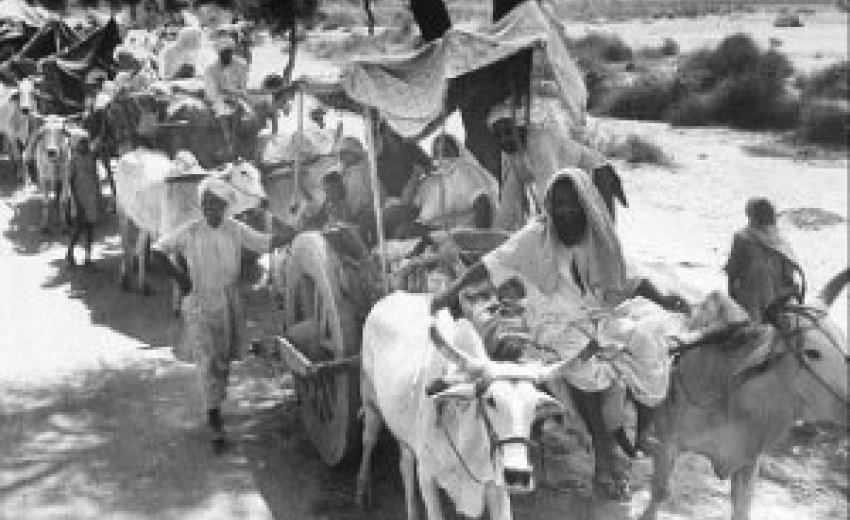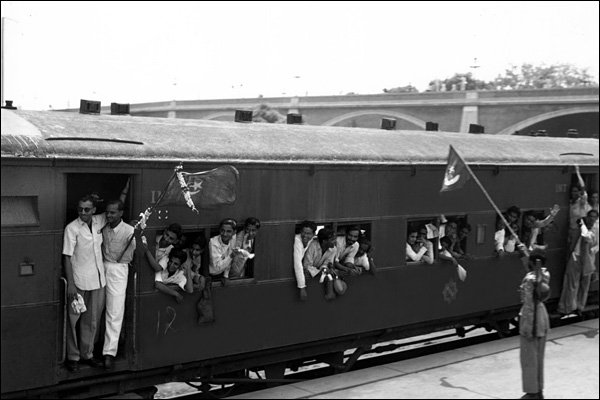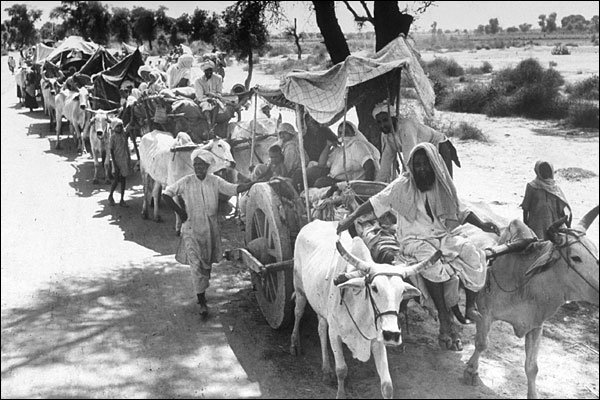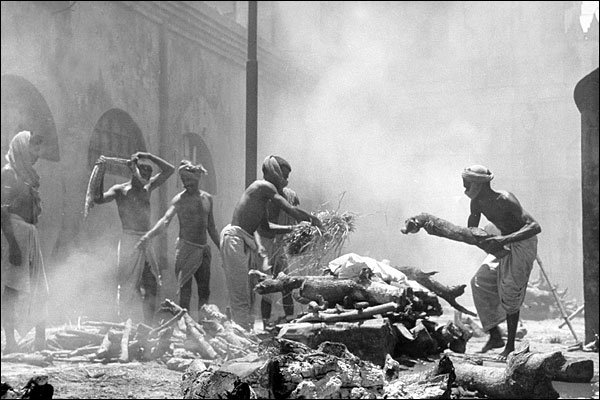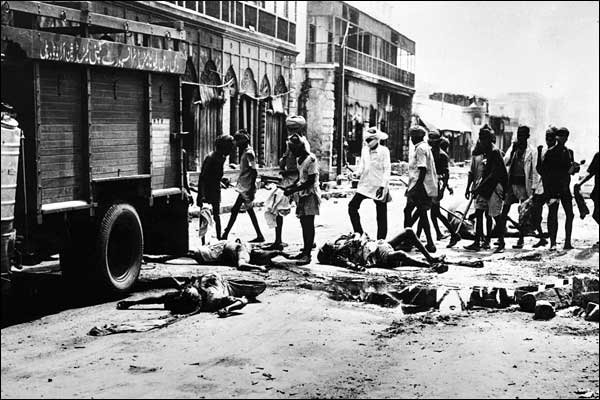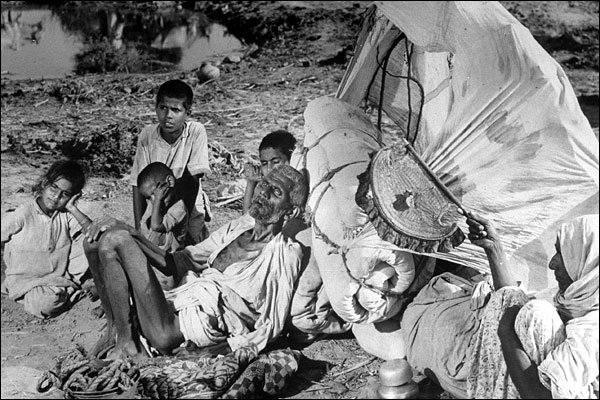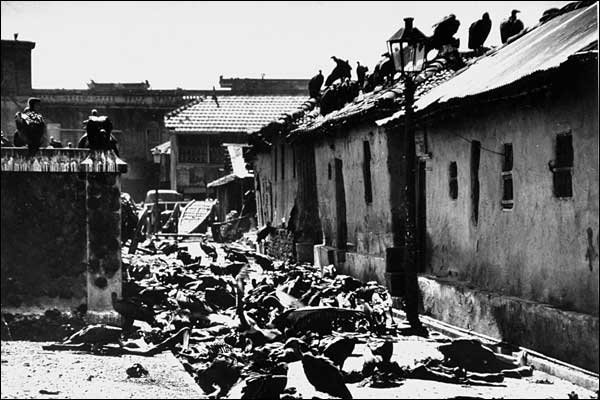Sikh retaliation did not begin with the riots of partition, but much before that when a follower of Guru Gobind Singh, Banda Bahadur attacked many Mughal states, killing hundreds of Muslims. He wanted to avenge the death of his Gurus, and the torture of his son.
Almost 63 years have passed since the bloody partition of British-controlled India to create two new nations of India and Pakistan, which even though taking birth from a single mother, remain hostile to each other. The seeds of distrust that were sown at that time mar the relations between these two countries to date, and the result takes a heavy toll on the development agenda of the South Asian region. There is mistrust, and each and everything that is wrong within the bounds of one’s country is imagined to be the conspiracy of the other. Had the partition been peaceful, it is safe to imagine that perhaps the mutual understanding between these two countries would have been much more amicable.
However, there are still many questions pertaining to the slaughter and abduction of millions during the partition that baffles historians and social scientists. After having lived together peacefully for centuries, how did one’s neighbor become abominable overnight, worthy of an excruciating death? Another question with special pertinence to Punjab is that even though the cause of friction was developments between the Hindus and Muslims, how did more riots take place between the Muslims and the Sikhs?
It is, therefore, illogical to conclude that all the violence that erupted on the eve of partition was a result of the developments of a few years. History takes hundreds of years in the making, and that is what culminated in the bloodshed during the partition of British-ruled India.
A while ago, a friend of mine made an interesting remark, which became the lifeline for this article. He stated that the Mughal Emperor Jahangir was the reason behind the Sikh-Muslim riots in 1947. Jahangir assassinated the fifth Sikh Guru Arjun outside the Lahore Fort, and then had the audacity to boast about it in his autobiography, Tuzk-e-Jahangiri.
The story goes as follows: Chandu Lal, a Hindu minister of the Emperor approached the Guru, while he was in Lahore, with a proposal for the hand of his daughter for his son. However, Arjun being a spiritual leader did not want to be associated with a politician, which is why he declined. Chandu could not bear this insult, and vilified the Guru in front of the Emperor. Later, when Jahangir’s son Khusrau rebelled against his father, he came to a langar of the Guru, where his force had food and then he received a tilak from Arjun as a blessing. When Jahangir heard this, he could not bear him any more, got him arrested, and sentenced him to capital punishment. He was subjected to inhumane torture before the punishment was carried out. In this one act, the Emperor laid the seeds for the transformation of a spiritual sect to a militant one. The Mughals murdered a prophet of Sikhism, creating a fissure between themselves and the Sikhs, which was not to heal easily. One can imagine how the events would have unfolded had Jahangir not executed the Guru. Would the Sikhs have felt the same kind of outrage that they manifested at the time of partition?
| ||||||||||||||
Mughal-Sikh relations received a further blow at the hands of an even more unscrupulous Emperor Aurangzeb, who killed all his brothers and imprisoned his father to get to the throne. He wanted to purge India of all its non-Muslim inhabitants, so a period of conversion followed, some by hook, some by crook. The Kashmiri confederate of the Emperor wanted to convert the Kashmiri Sikhs, however the Sikhs retorted that if their Guru, the ninth Guru of Sikhism Tegh Bahadur would convert, then all of them would. The Guru was captured, brought to Delhi and tortured. When he refused to abandon his religion, he was executed. He was beheaded publicly at the Chandni Chowk.
Aurangzeb possibly played the worst role to foment Muslim-Sikh tension. Millions of Sikhs were beheaded and left to rot. It is said that even today if one digs the ground of Gurdwara Shaheed Gunj, located in Lahore, one would find hundreds of skulls from that era. This sanctuary remains an ode to those martyrs.
The last blow came from the Nawab of Sirhind, Wazir Khan. He noticed that the last Guru Gobind Singh was establishing links with the Mughal Emperor, Bahadur Shah Zafar, which he could not tolerate. So he commissioned two Pathans — Jamshed Khan and Wasil Beg — to kill him, which they did.
Sikh retaliation did not begin with the riots of partition, but much before that, when a follower of Guru Gobind Singh, Banda Bahadur attacked many Mughal states, killing hundreds of Muslims. He wanted to avenge the death of his Gurus, and the torture of his sons. He is deemed as a Sikh martyr.
Master Tara Singh, considered a hero by many Sikh devotees, was another political leader during the time of partition who tapped the repository of the existing Sikh-Muslim tension. On March 3, 1947, he unsheathed his kirpan and shouted anti-Pakistan slogans in front of a volatile crowd, which included hostile elements and some sympathisers. It is said that he also shouted that the time to avenge the death of the Gurus has arrived. He narrowly escaped from the venue, which was filled predominantly by Muslims.
Ever since the creation of Pakistan, the Muslim-Sikh riots have been treated as an anomaly, explained by the wiliness of the Hindu scheming mindset. The truth however is not that easy to explain. The volcano that burst first during the era of Banda Bahadur, and then during Master Tara’s era, had been heating up for centuries — to be exact, since the execution of Guru Arjan, when it was first ignited by Emperor Jahangir. These neighbors did not become enemies overnight as a result of some conspiracy, but followed a historical trajectory that finds its roots in the Mughal Empire.
![]() The writer is a graduate in anthropology and can be reached at [email protected]
The writer is a graduate in anthropology and can be reached at [email protected]
